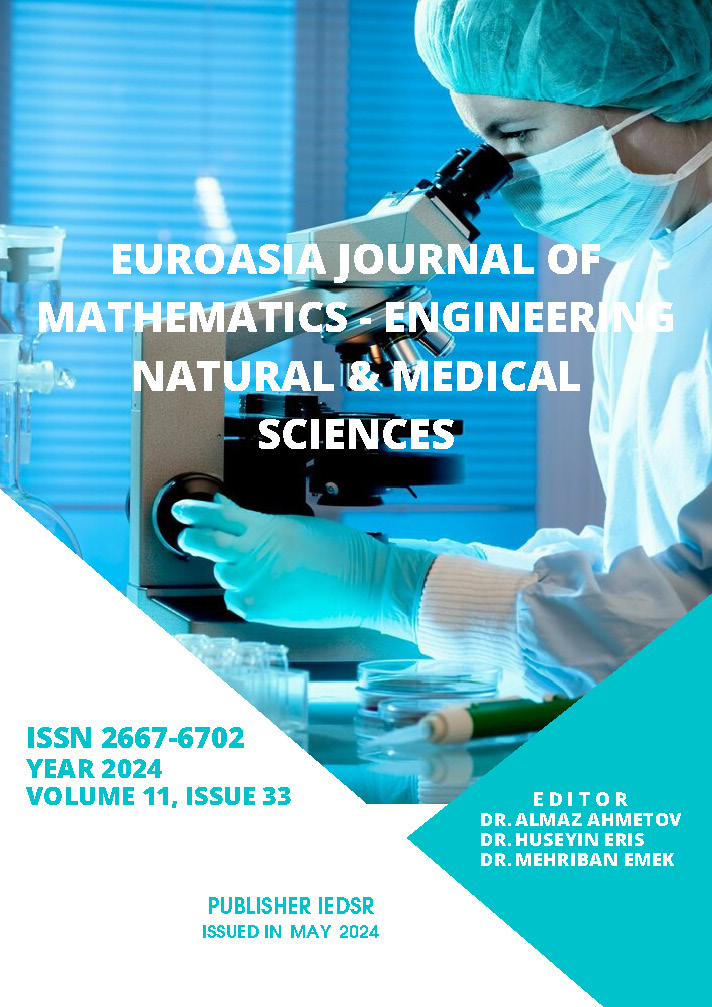Using Iot Technology For Structural Health Monitoring Applications Of Ships
DOI:
https://doi.org/10.5281/zenodo.12683533Keywords:
Structural Health Monitoring, Internet of Things, Wireless sensorsAbstract
Structures such as buildings, bridges, and ships have a certain design life. Monitoring the lifetime of these structures, considering damage due to environmental factors, or predicting potential future events is possible by observing changes in the materials of the structures. For this purpose, Structural Health Monitoring (SHM) systems are used. The development of structural health monitoring technology involves observing changes in building materials through periodically sampled response measurements. For data collection and monitoring from these structures at any time and from any location, Internet of Things (IoT) technologies are integrated with the Structural Health Monitoring system. Especially for ships, since ships are more exposed to environmental factors such as wind, waves, and storms, SHM is important to track damages and take necessary actions. This paper provides information about the SHM system on ships, the sensors used for this purpose, IoT technologies for data transmission, and recent advances in how these technologies are integrated and other aspects. SHM implementation is a challenging process owing to the large physical dimensions of ship structures, the variability of environmental factors, and data loss due to damages. In conclusion, information is given on how the SHM system on ships can be improved in the future.
References
Abdulkarem, M., Samsudin, K., Rokhani, F. Z., & A Rasid, M. F. (2019). Wireless sensor network for structural health monitoring: A contemporary review of technologies, challenges, and future direction. Structural Health Monitoring. doi:10.1177/1475921719854528
Anyfantis, K. N. (2021). An abstract approach toward the structural digital twin of ship hulls: A numerical study applied to a box girder geometry. Proceedings of the Institution of Mechanical Engineers, Part M: Journal of Engineering for the Maritime Environment, 235(3), 718–736. doi:10.1177/1475090221989188
Brownjohn, J. M. W. (2007). Structural health monitoring of civil infrastructure. Philosophical Transactions of the Royal Society A: Mathematical, Physical and Engineering Sciences, 365(1851), 589–622. doi:10.1098/rsta.2006.1925
Burgos, D. A. T., Vargas, R. C. G., Pedraza, C., Agis, D., & Pozo, F. (2020). Damage Identification in Structural Health Monitoring: A Brief Review from its Implementation to the Use of Data-Driven Applications. Sensors, 20(3), 733. doi:10.3390/s20030733
Farrar, C. R., & Worden, K. (2007). An introduction to structural health monitoring. Philosophical Transactions of the Royal Society A: Mathematical, Physical and Engineering Sciences, 365(1851), 303–315. doi:10.1098/rsta.2006.1928
Farrar, C. R., & Worden, K. (2010). An Introduction to Structural Health Monitoring. CISM International Centre for Mechanical Sciences, 1–17. doi:10.1007/978-3-7091-0399-9_1
Kefal A., Hizir O., Oterkus E. (2015). A smart system to determine sensor locations for structural health monitoring of ship structures. Conference: 9th International Workshop on Ship and Marine Hydrodynamics - IWSH 2015At: Glasgow, United Kingdom
Mouitz, A.P., Gellert, E., Burchill P., & Challis, K. (2001). Review of advanced composite structures for naval ships and submarines, Compos. Struct. 53, 21–41.
Murawski L., Opoka S., Majewska K., Mieloszyk M. & Ostachowicz W. (2012). Investigations of Marine Safety Improvements by Structural Health Monitoring Systems, International Journal on Marine Navigation and Safety of Sea Transportation
Okasha, N. M., Frangopol, D. M., & Decò, A. (2010). Integration of structural health monitoring in life-cycle performance assessment of ship structures under uncertainty. Marine Structures, 23(3), 303–321. doi:10.1016/j.marstruc.2010.07.004
Sabra, K. G., & Huston, S. (2011). Passive structural health monitoring of a high-speed naval ship from ambient vibrations. The Journal of the Acoustical Society of America, 129(5), 2991–2999. doi:10.1121/1.3562164
Sielski, R. A. (2012). Ship Structural Health Monitoring Research at the Office of Naval Research. JOM, 64(7), 823–827. doi:10.1007/s11837-012-0361-x
Stull, C. J., Earls, C. J., & Koutsourelakis, P.-S. (2011). Model-based structural health monitoring of naval ship hulls. Computer Methods in Applied Mechanics and Engineering, 200(9-12), 1137–1149. doi:10.1016/j.cma.2010.11.018
Torkildsen, H.E., Grøvlen, A., Skaugen, A., Wang, G., Jensen, A.E., Pran, K., Sagvolden, G. (2005). Development and Applications of Full-Scale Ship Hull Health Monitoring Systems for the Royal Norwegian Navy, Proc. Recent Developments in Non-Intrusive Measurement Technology for Military Application on Model- and Full-Scale Vehicles, Neuilly-sur-Seine, 22-1 – 22-14.
Wang, G., Pran, K., Sagvolden, G., Havsgård, G. B., Jensen, A. E., Johnson, G. A., & Vohra, S. T. (2001). Ship hull structure monitoring using fibre optic sensors. Smart Materials and Structures, 10(3), 472–478. doi:10.1088/0964-1726/10/3/308
Zhou, J., Yang, Y., Ding, S. X., Zi, Y., & Wei, M. (2018). A Fault Detection and Health Monitoring Scheme for Ship Propulsion Systems Using SVM Technique. IEEE Access, 6, 16207–16215. doi:10.1109/access.2018.2812207
Downloads
Published
How to Cite
Issue
Section
License
Copyright (c) 2024 Euroasia Journal of Mathematics, Engineering, Natural & Medical Sciences

This work is licensed under a Creative Commons Attribution-NonCommercial 4.0 International License.

